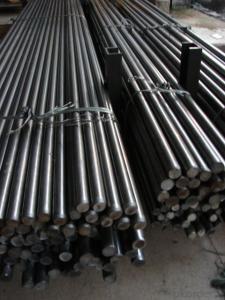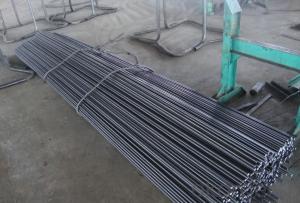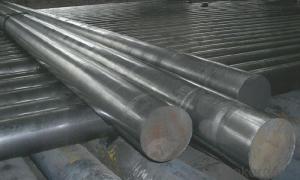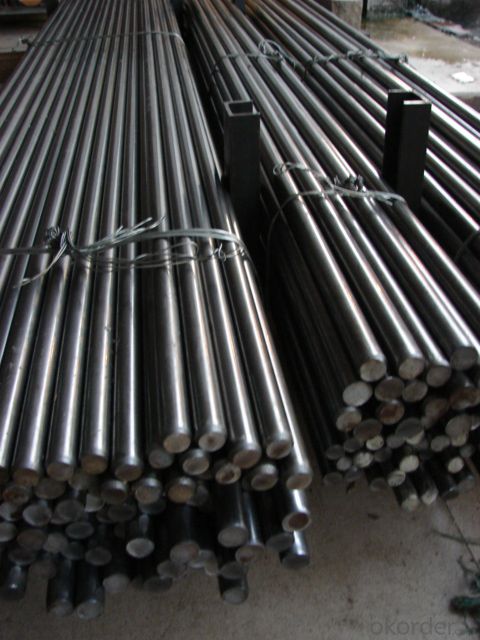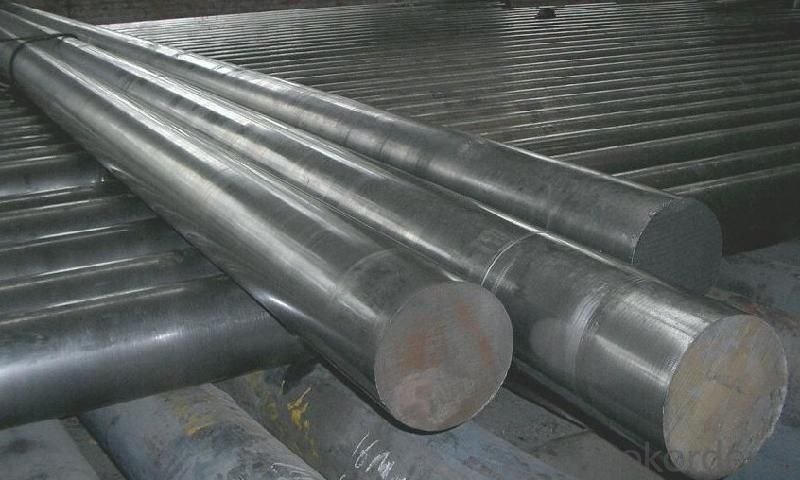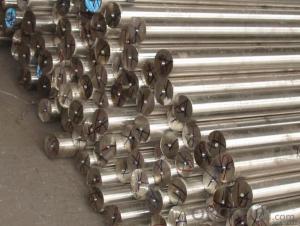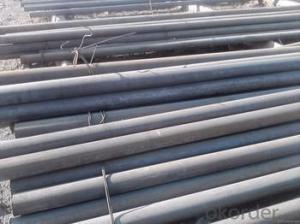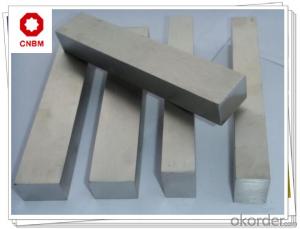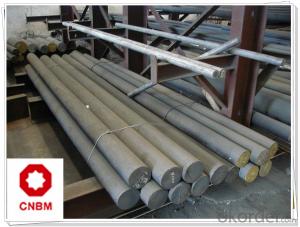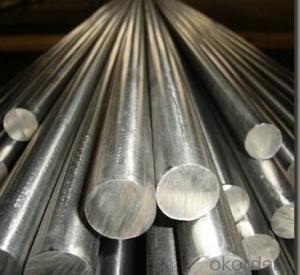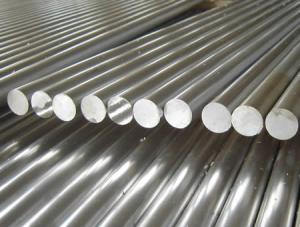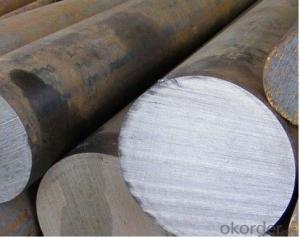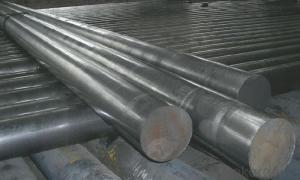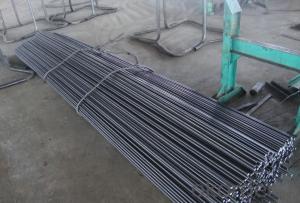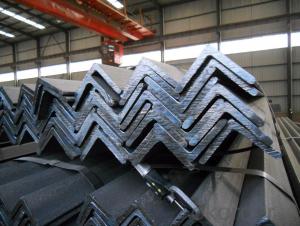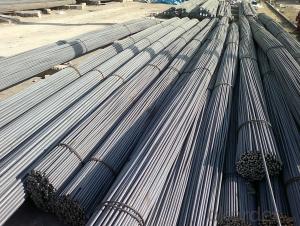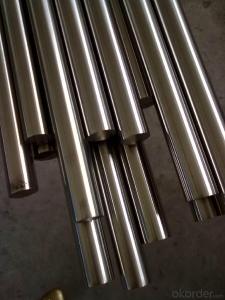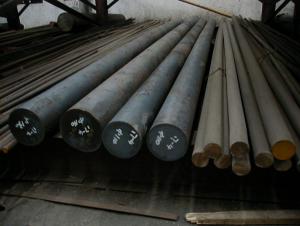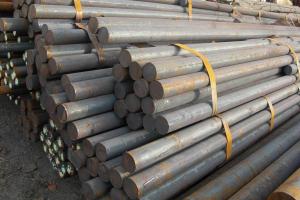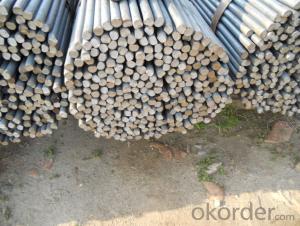Cold Drawn Steel Round Bar with High Quality-75mm
- Loading Port:
- China Main Port
- Payment Terms:
- TT or LC
- Min Order Qty:
- 100 m.t
- Supply Capability:
- 10000 m.t/month
OKorder Service Pledge
OKorder Financial Service
You Might Also Like
Cold Drawn Steel Round Bar with High Quality-75mm
Product Description:
Specifications:
1.Size: 75mm
2.Material: AISI 1045/DIN 1.1191/JIS S45C/GB 45
3.Chemical analysis:
C | Si | Mn | P≤ | S≤ | Cr |
0.40~0.60 | 0.20~0.30 | 0.70~0.90 | 0.030 | 0.030 | 0.01~0.03 |
4.Process: EAF + LF + VD + Forged + Heat Treatment (optional)
5.Delivery condition:Hot forged +Rough machined (black surface after Q/T)+ Turned (optional)
6.Technical Data: Chemical Composition, Physical Properties and Mechanical Testing.
7. Test: Ultrasonic test according to SEP 1921-84 3C/c.
8. Standard: GB, AISI, ASTM, DIN, JIS, BS, etc.
9. Quality Management Certification: ISO 9001:2008.
10. Main application:
(1)It is widely used in machinery manufacturing.
(2) For the manufacture of high strength requirements parts, such as gears, shafts, piston pin and the uneven force big machining parts, forgings, stampings and bolts, nuts, pipe joint.
FAQ of Cold Drawn Steel Round Bar with High Quality-75mm:
Q1: How soon can we receive the product after purchasement?
A1: Within three days of placing an order, we will begin production. The specific shipping date is dependent upon international and government factors, but is typically one month.
Q2: How do you guarantee the quality of our products?
A2: We have established an advanced quality management system which conducts strict quality tests at every step, from raw materials to the final product. At the same time, we provide extensive follow-up service assurances as required.
Q3: The prices are invoicing on theoritical weight or on actual weight?
A3: We can do it in both manners, according to the customers' request.
Images of Cold Drawn Steel Round Bar with High Quality-75mm:
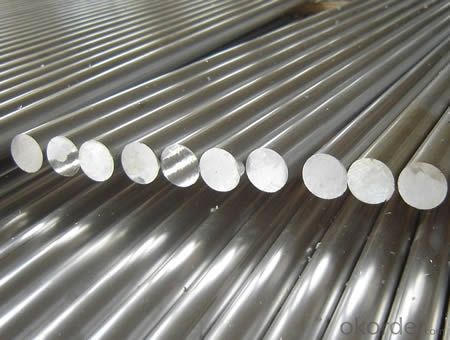
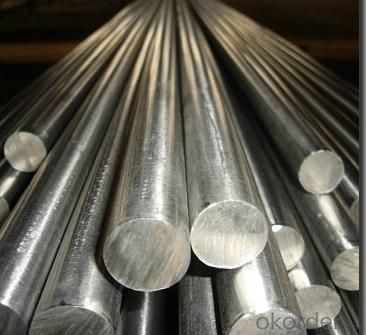
- Q: The difference between round face and round bar steel on concrete
- Round steel is a solid strip of steel whose cross section is round. The specifications are expressed in millimeters of diameter, such as "50", which means a round bar of 50 millimeters in diameter.
- Q: What are the quality control measures for steel round bars?
- Steel round bars are subject to a series of inspections and tests to ensure that they meet the necessary standards and specifications. These measures play a vital role in guaranteeing the bars' structural integrity and reliability. Common quality control measures for steel round bars include: 1. Visual Inspection: Bars are visually examined to identify any surface defects like cracks, pits, or rust. This ensures that the bars have a smooth surface finish and are free from visible imperfections. 2. Dimensional Inspection: The diameter, length, and straightness of the bars are measured to ensure they adhere to the required tolerances. Any deviations from the specified dimensions can impact the bars' performance and compatibility in different applications. 3. Chemical Composition Analysis: Chemical composition analysis is carried out to confirm the percentage of various elements present in the steel. This analysis ensures that the bars possess the correct alloying elements in the proper proportions, which directly influence their mechanical properties and performance. 4. Mechanical Testing: Various mechanical tests are conducted to assess the bars' strength, hardness, and other mechanical properties. These tests may include tensile, impact, and hardness testing. They help determine if the bars meet the necessary durability and strength standards. 5. Ultrasonic Testing: Ultrasonic testing is often employed to detect internal defects such as voids, inclusions, or cracks within the steel round bars. This non-destructive testing technique utilizes high-frequency sound waves to identify flaws that may compromise the bars' structural integrity. 6. Surface Treatment Inspection: If the steel round bars undergo any surface treatments like heat treatment or coating, an inspection is conducted to ensure that these treatments are correctly applied and meet the required specifications. 7. Certification and Documentation: Quality control measures also encompass proper documentation and certification of the steel round bars. This ensures traceability and provides evidence that the bars have undergone the necessary inspections and tests, instilling confidence in customers regarding the product's quality. In summary, these quality control measures for steel round bars guarantee their high quality, compliance with necessary specifications, and suitability for their intended applications.
- Q: What are the typical tolerances for steel round bars?
- The typical tolerances for steel round bars can vary depending on the specific grade and size of the bar. However, common industry standards typically specify tolerances in terms of diameter deviation, straightness, and length. For diameter, tolerances can range from +/- 0.005 to +/- 0.25 inches, again depending on the bar size. Straightness tolerances are often specified as a maximum deviation per foot or meter, such as 0.010 inches per foot. Length tolerances can range from +/- 0.125 to +/- 1 inch. It's important to consult the appropriate industry standards or supplier specifications for precise tolerances based on the specific requirements of the project or application.
- Q: What is the difference between 40Cr round steel and 40Cr forging parts?
- But 40Cr forgings are objects that are subjected to pressure by plastic deformation to shape a desired shape or suitable compressive force. (usually done by using hammers or pressure). The casting process constructed a fine grain structure and improved the physical properties of the metal.
- Q: What is the difference between a turned and a ground steel round bar?
- Two distinct types of steel bars, a turned steel round bar and a ground steel round bar, have undergone different manufacturing procedures. To create a turned steel round bar, a cylindrical steel rod is rotated against a cutting tool, which eliminates material from the bar's surface to achieve the desired dimensions and finish. This process enhances the bar's dimensional accuracy and smoothness. Turned steel round bars find common usage in precision machining or automotive components that necessitate tight tolerances and a smooth surface finish. Conversely, a ground steel round bar is manufactured by passing a turned steel round bar through a grinding machine. This machine uses an abrasive wheel to eliminate any surface imperfections or irregularities from the bar. The grinding process ensures that the bar maintains a consistent diameter and a smooth, polished surface. Ground steel round bars often find application in aerospace components or hydraulic cylinders that demand a high level of precision and surface finish. In conclusion, the primary distinction between a turned and a ground steel round bar lies in the manufacturing processes they undergo. While turned bars are created by cutting material from the surface, ground bars are refined by grinding to achieve superior dimensional accuracy and surface smoothness. The selection between turned and ground steel round bars is contingent upon the specific requirements of the application and the desired level of precision and surface finish.
- Q: Can steel round bars be painted or coated?
- Yes, steel round bars can be painted or coated with various types of protective coatings to enhance their durability and prevent corrosion.
- Q: 1, three, two, steel, wire rod, round steel what is the difference?
- Wire is a wire, usually refers to the use of "high speed non-twist wire rod rolling mill, ordinary common low carbon steel, hot-rolled wire torsion free cooling (ZBH4403-88) and the high quality carbon steel, hot-rolled wire rod without torsion cold control (ZBH44002-88).
- Q: How do steel round bars compare to stainless steel round bars?
- Steel round bars and stainless steel round bars differ in their composition, making them suitable for various applications. The composition of steel mainly consists of iron with small amounts of carbon and other elements, whereas stainless steel is an alloy composed of iron, chromium, and often other elements like nickel or molybdenum. This unique composition gives stainless steel its distinctive properties, such as corrosion resistance. Both steel and stainless steel round bars can be manufactured to have high tensile strength. However, stainless steel generally has higher tensile strength compared to regular steel, making it more suitable for applications requiring additional strength and durability. Another significant difference lies in their resistance to corrosion. Stainless steel round bars have excellent corrosion resistance due to the presence of chromium in their composition, making them ideal for applications exposed to moisture, chemicals, or other corrosive environments. On the other hand, steel round bars are more prone to rust and corrosion and may need additional protective coatings in such environments. In terms of cost, steel round bars are generally more affordable compared to stainless steel round bars. The higher cost of stainless steel is attributed to its unique properties and the additional alloying elements required in its production. Both steel and stainless steel round bars have advantages and specific applications. Steel round bars are commonly used in construction, manufacturing, and general-purpose applications where corrosion resistance is not a primary concern. In contrast, stainless steel round bars find extensive use in industries such as food processing, chemical processing, medical equipment, and marine applications where corrosion resistance is crucial. In conclusion, the choice between steel round bars and stainless steel round bars depends on the specific requirements of the application. Steel round bars are more cost-effective but may require additional corrosion protection, while stainless steel round bars offer superior corrosion resistance and strength.
- Q: What is the diameter deviation of 12 mm galvanized round bar?
- It is widely used in hardware, building, automobile, shipbuilding, petrochemical, machinery, medicine, food, electricity, energy, aerospace and other architectural decoration. The most extensive machining of general machine parts, general rod type steel parts, CD pole, bolt, nut.
- Q: What are the different types of steel round bars used in the manufacturing of shafts?
- When manufacturing shafts, various types of steel round bars are commonly used. The selection of the steel round bar depends on the specific application and requirements of the shaft. Here are some of the frequently utilized types: 1. Carbon Steel Round Bars: These round bars are the most commonly used in shaft manufacturing. Carbon steel provides good strength and toughness, making it suitable for a range of shaft applications. 2. Alloy Steel Round Bars: By adding elements like chromium, nickel, or molybdenum to carbon steel, alloy steel round bars are created. This enhances the strength, hardness, and wear resistance of the shaft, making it appropriate for demanding applications. 3. Stainless Steel Round Bars: Stainless steel is highly resistant to corrosion and offers excellent mechanical properties. It is commonly used in shafts that require resistance to corrosion, high temperatures, or harsh environments. 4. Tool Steel Round Bars: Tool steel round bars are renowned for their exceptional hardness, toughness, and wear resistance. They are used in shafts for cutting tools, molds, and dies that necessitate high performance and durability. 5. High-Speed Steel Round Bars: Primarily used in shafts for cutting tools such as drills, mills, and taps, high-speed steel round bars possess excellent heat resistance and can withstand high cutting speeds without losing their hardness. 6. Mild Steel Round Bars: Mild steel round bars are low carbon steel bars that offer good weldability and machinability. They are commonly used in shafts for less demanding applications that do not require high strength or hardness. Considering the specific requirements, such as strength, hardness, corrosion resistance, and temperature resistance, is crucial when choosing the appropriate type of steel round bar for manufacturing shafts.
Send your message to us
Cold Drawn Steel Round Bar with High Quality-75mm
- Loading Port:
- China Main Port
- Payment Terms:
- TT or LC
- Min Order Qty:
- 100 m.t
- Supply Capability:
- 10000 m.t/month
OKorder Service Pledge
OKorder Financial Service
Similar products
Hot products
Hot Searches
Related keywords
